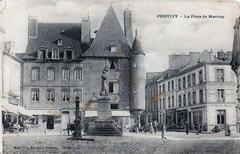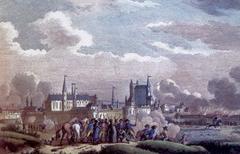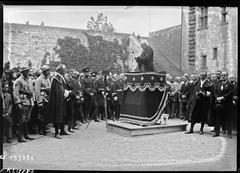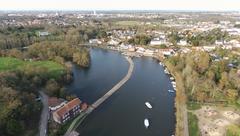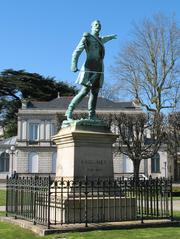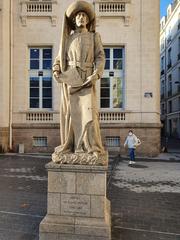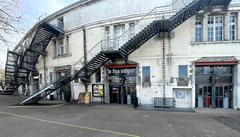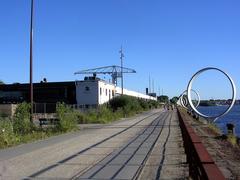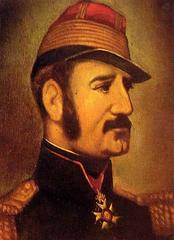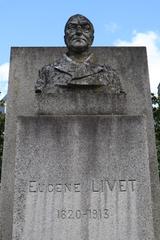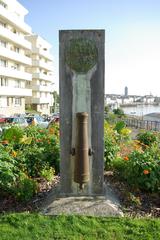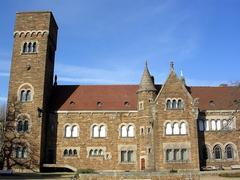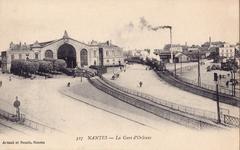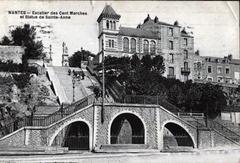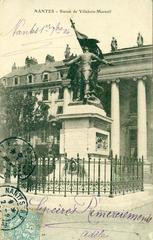Visiting the Memorial to the Abolition of Slavery in Nantes, France: Tickets, Hours, and Travel Tips
Date: 15/06/2025
Introduction
The Memorial to the Abolition of Slavery in Nantes stands as one of France’s most powerful sites of remembrance, commemorating the victims of the transatlantic slave trade and acknowledging the city’s significant role in this dark chapter of history. Located on the historic Quai de la Fosse—once the departure point for over 1,700 slave ships—the memorial is both an urban landmark and a catalyst for public dialogue about human rights, justice, and memory.
This comprehensive guide provides historical context, architectural insights, practical visitor information, and travel tips to help you make the most of your visit. Whether you are a history enthusiast, educator, or traveler, this article will help you understand the memorial’s significance and plan a meaningful experience in Nantes.
For additional resources, official updates, and virtual tours, visit the Memorial to the Abolition of Slavery website (CIPDH, Africanews, ArchDaily).
Table of Contents
- Introduction
- Historical Context: Nantes and the Atlantic Slave Trade
- Genesis of the Memorial: From Silence to Remembrance
- Architectural and Symbolic Design
- Visiting the Memorial: Hours, Tickets, and Accessibility
- Nearby Nantes Historical Sites
- Societal Impact and Continuing Dialogue
- Frequently Asked Questions (FAQ)
- Tips for Planning Your Visit
- References
Historical Context: Nantes and the Atlantic Slave Trade
Nantes was France’s largest slave-trading port during the 18th century and the fourth largest in Europe. Between the mid-17th and mid-19th centuries, more than 550,000 enslaved Africans were transported to the Americas on ships departing from Nantes (CIPDH). The city’s fortunes were closely linked to the triangular trade, which saw European goods exchanged for enslaved people in Africa, who were then forced to labor in the Americas before ships returned to Europe with commodities like sugar, tobacco, and cotton (Africanews).
Despite the official abolition of slavery in France in 1848, illegal trading persisted in Nantes for years afterwards. Public acknowledgment of this legacy was limited until the late 20th century, when local activists began advocating for remembrance and education.
Genesis of the Memorial: From Silence to Remembrance
Efforts to confront Nantes’ history began in the 1980s with local associations raising awareness through exhibitions and public discourse. The landmark exhibition “The Shackles of Memory” (1992–1994) drew hundreds of thousands of visitors, highlighting a growing readiness to address the city’s past.
A turning point arrived in 1998, when the city council committed to a permanent memorial after a commemorative sculpture was vandalized. The design by architect Julian Bonder and artist Krzysztof Wodiczko was chosen for its profound symbolism and educational intent (Harvard GSD). The memorial was inaugurated in 2012 and is now recognized as the largest of its kind in the world (CIPDH).
Architectural and Symbolic Design
The Esplanade: Surface Remembrance
At street level, visitors encounter 2,000 glass plaques embedded in the pavement, each inscribed with the names and departure dates of slave ships or the names of African, Caribbean, and American ports involved in the slave trade (Nomads Travel Guide). As daylight changes, the inscriptions catch the sun, and at dusk, shadows stretch across the walkway—an evocative reminder of the scale and human cost of Nantes’ involvement (Maravi Post).
The Subterranean Passage: Immersive Reflection
Descending a wide staircase, visitors enter an underground gallery lined with a 90-meter-long glass wall displaying abolitionist texts, legal documents, and the Universal Declaration of Human Rights in multiple languages (Harvard GSD). The word “freedom” appears in over 50 languages, representing the global reach of the slave trade and the universal quest for liberty. The passage’s minimalist design and subdued lighting foster a contemplative atmosphere, evoking the confinement endured by enslaved people during the Middle Passage.
A monumental slanted glass plate at the entrance marks the rupture of abolition and signals the memorial’s presence to the city above (EUmies Awards).
Visiting the Memorial: Hours, Tickets, and Accessibility
- Location: Quai de la Fosse, Nantes, France, along the Loire River.
- Opening Hours: Daily from 9:00 AM to 7:00 PM (last entry at 6:30 PM); hours may vary with seasons and holidays. Check the official website for updates.
- Tickets: Admission is free for all visitors.
- Accessibility: The memorial is fully wheelchair accessible, with ramps, elevators, and multilingual signage. Audio guides and brochures are available in several languages.
- Facilities: There are no restrooms on-site, but public facilities are nearby. Guide dogs are welcome.
- Photography: Discreet photography is permitted; please respect the contemplative environment.
Nearby Nantes Historical Sites
Enhance your visit by exploring other key sites in Nantes:
- Château des ducs de Bretagne: Home to the Nantes History Museum, which features exhibitions on the city’s maritime history and involvement in the slave trade.
- Machines de l’Île: An imaginative blend of art and engineering close to the memorial.
- Nantes Cathedral: A notable gothic landmark within walking distance.
These attractions provide additional context and insight into the city’s complex past.
Societal Impact and Continuing Dialogue
The memorial has sparked public conversations, educational initiatives, and commemorative events, including the annual International Day for the Remembrance of the Slave Trade and its Abolition (August 23). By confronting a painful history, the site has fostered a culture of remembrance and ongoing activism against modern slavery and discrimination (ArchDaily).
Frequently Asked Questions (FAQ)
Q: What are the memorial’s opening hours?
A: Daily from 9:00 AM to 7:00 PM, with last entry at 6:30 PM. Check for seasonal changes.
Q: Is there an entry fee?
A: No, admission is free.
Q: Are guided tours available?
A: Yes, guided tours can be arranged through local tourism offices. Group and school tours are available, and some are offered in English during peak times.
Q: Is the memorial accessible for people with disabilities?
A: Yes, the site is fully accessible.
Q: Can I take photos at the memorial?
A: Yes, but please be discreet and respectful.
Q: Are there restrooms on site?
A: No, but public restrooms are located nearby.
Q: What other attractions are nearby?
A: Château des ducs de Bretagne, Nantes History Museum, and other city landmarks.
Tips for Planning Your Visit
- Arrive early or late: For a quieter experience and ideal lighting for photos, visit early in the morning or late in the afternoon.
- Use public transport: The memorial is easily accessible by tram or bus. Parking is limited near Quai de la Fosse.
- Combine with other sites: Plan a day exploring the memorial and other nearby historical or cultural attractions.
- Check for events: Look for special commemorative events or workshops on the official website.
- Download resources: The Audiala app offers guided content and interactive maps for an enhanced visit.
Visuals and Media

Alt text: The Memorial to the Abolition of Slavery in Nantes with glass plaques on the upper esplanade.

Alt text: Close-up of glass plaques bearing slave ship names at the memorial.
Alt text: Map showing the location of the Memorial to the Abolition of Slavery in Nantes.
Summary and Call to Action
A visit to the Memorial to the Abolition of Slavery in Nantes is both a profound educational experience and a call to engage with the ongoing struggle for justice and human rights. Through its evocative architecture, immersive exhibitions, and public programming, the memorial transforms memory into action and invites all who visit to reflect, learn, and act.
To enrich your experience:
- Check the latest hours and events on the official website.
- Download the Audiala app for guided tours and up-to-date information.
- Explore nearby Nantes historical sites for a fuller understanding of the city’s heritage.
Engage with history, honor the past, and join the ongoing journey toward justice and remembrance (CIPDH, Africanews, ArchDaily).
References and Further Reading
- Memorial to the Abolition of Slavery in Nantes: Hours, Tickets, and Historical Insights, CIPDH
- Nantes Confronts Its Past With Memorial to the Atlantic Slave Trade, Africanews
- Memorial to the Abolition of Slavery Wodiczko Bonder, ArchDaily
- Memorial to the Abolition of Slavery, EUmies Awards
- Memorial de l’Abolition de l’Esclavage, Nomads Travel Guide
